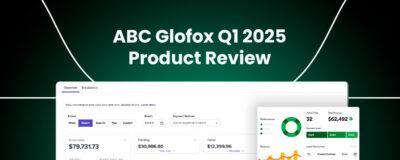There’s no time like the present to get your social media content organized. Although it may sound easier said than done, there are multiple tools and templates you can use to get your social media content in order.
There are a ton of benefits that come from setting up a content calendar. It takes time to set up but once you’re off and running, you’ll find you’re more organized, saving time and making more efficient use of your workload. It sounds like a big commitment at first but it will pay off in the future. In this article, we will discuss how to organize your content calendar and the tools you can use to get started.
Skip ahead to:
- What Exactly is a Social Media Content Calendar?
- Why Should You Use a Social Media Content Calendar
- 4 Top Social Media Management and Planning Tools
- 9 Steps to Organize Your Social Media Content Calendar
What Exactly is a Social Media Content Calendar?
A social media editorial content calendar is your secret weapon in your social media marketing plan. It’s used to plan and schedule your social media posts in advance. Your editorial calendar helps you to decide which content you plan on sharing and also helps track deadlines. It keeps you focused and takes a lot of the headache out of social media content planning. Rather than thinking about what you are going to post every day, you plan all your content in one go for the next two to three months.
With so many social media channels to stay on top of, a calendar could be just what you need to spread your message consistently. Typically, social media calendars are either built using spreadsheets or specific software. Spreadsheets are the more cost-effective option, however, software services can help save time and have powerful automation capabilities. Spreadsheets are definitely a workable solution when you’re first starting out but as your social media planning matures, software tools and services are extremely useful.
Why Should You Use a Social Media Content Calendar
A social media content calendar gives your team one place to focus on. Without it, it can leave your staff in the dark when it comes to your social media strategy. This can lead to frustration and confusion. It’s hard to effectively engage your audience and build your business with no strategy and content calendar in place.
Save Time and Stay Organized
There’s nothing worse than scrambling to put together a post five minutes before it needs to go live. With calendars, you can plan out weeks’ or even months’ worth of social media content in one go. This helps to free up your time in the future. Otherwise, you end up spending more time each day crafting posts and thinking about how it fits in with your overall strategy.
Customize Posts for Each Social Media Channel
Instead of pushing the same message across all your social channels, a content calendar lets you customize your post for each channel. You can craft a custom message for each channel that suits the platform and your audience. For example, you may use Instagram to push out a snippet of your latest video while using Facebook and YouTube to push out the full video.
Track Performance
Scheduling and planning content with a calendar allows you to track post performance more effectively. You have access to the bigger picture. Your team can look back at certain pieces of content and find out which one performed the best. This helps to improve your social media content and learn from both your successes and mistakes.
Boost Efficiency and Maintain Consistency
Inefficiency can impact the customer’s experience with your brand. According to the Content Marketing Institute, 72% of B2B marketers consider the development of their content strategy a major factor in their success. When you have all the information you need in one place, it helps your team to maintain one consistent message across the board with a regular posting schedule.
The Feel Good Social Media Podcast has an excellent episode on content planning. The episode shares three tips on how to be more effective and efficient on social media and stop wasting time.
4 Top Social Media Management and Planning Tools
Social media planning software is a growing marketplace. Content calendars have become an essential part of running and growing a business. With the volume of content that brands produce, it feels practically impossible to plan your social media content without a calendar. A scheduling calendar can support your overall content strategy by reinforcing your message and staying on brand. Here are four of the best social media management and planning tools for you to try.
Buffer
Buffer is one of the original players in social media management, launching in 2010. Fast-forward several years and Buffer remains an expert in the field. Buffer covers the main social media platforms like Facebook, Instagram, Pinterest, Twitter, and Google+. The platform requires a steeper learning curve as it’s a very comprehensive solution. You can plan, schedule, post, and analyze content.
Hootsuite
The majority of people have heard of Hootsuite. It’s one of the most popular social media management platforms in the world. You can create, schedule, promote, and monitor your content. With Hootsuite, you can monitor multiple social media platforms on one dashboard.
ContentCal
ContentCal is a simple and well-designed tool that focuses on content planning. You can plan, publish, and analyze all your social media content. You can also respond to social media messages. The content planner is advertised as a collaboration tool that allows for a rigorous approval process before sharing your content with the world.
CoSchedule
The content calendar offers all the usual functionality you expect from a social media management tool. Its ReQueue feature gives CoSchedule permission to intelligently share posts at the best times. You can schedule more than 60 posts in bulk. The management tool features multiple packages to suit different budgets and business sizes ranging from $40 up to $2,200 per month.
9 Steps to Organize Your Social Media Content Calendar
With so many social media channels to publish to and manage, it’s important to stay organized and use your time efficiently. It’s essential to stay on top of social media trends so that you can craft effective content that will connect with your audience. Let’s take a look at the steps you need to take to organize your social media content calendar.
1. Conduct a Social Media Audit
The first step is to get a clearer picture of your current social media content. Before you begin filling out your content calendar, you need to evaluate your current social media. Figure out which areas of your social media strategy you need to focus on and where needs improving. An audit is crucial to optimizing your efforts so that you put the work into the right areas. This will help you to determine which channels you want to use and the type of content you want to produce.
The Top 10 Barriers
Slowing Your Fitness
Business Growth
Discover more When conducting a social media audit, think about the following points:
- Audience demographics and personas
- Which platform has grown the most?
- What type of content performs the best?
- Engagement
- Goals for each social media platform
- Opportunities for improvement
- Account security and passwords
2. Choose Your Social Media Channels
From TikTok and Instagram to Facebook and Twitter, there are a ton of platforms when it comes to social media. It takes a lot of time and effort to stay on top of all the latest social media developments. This is why carrying out a social media audit is so helpful. You can find out more about your audience and demographics. If you have a ton of engagement on Facebook and Instagram but your Pinterest and TikTok accounts don’t perform well think about how you can best use your time. Is it the type of content you’re pushing out or should you consolidate your social media efforts on the platforms you know perform well?
Facebook and Instagram are two of the most commonly used channels in the fitness sector. They work together fluidly and complement one another. Other platforms to consider include TikTok, Twitter, LinkedIn, YouTube, and Pinterest.
3. Think About What Your Calendar Needs to Track
As you figure out how your content calendar will look and work, think about the type of data your calendar will track. Whether you’re a personal trainer or have multiple studio locations with a large team, your calendar should tell you who is doing what and when it’s done, approved, and published.
This is also the perfect opportunity to create a posting schedule. Decide how many times you will post per week across different platforms. Here are some basic details you can track to start you off:
- Social media platform
- Date and time
- Post copy
- Post type
- Image/visuals
- Links
- Character count
A recent episode from The Small Biz Marketing Podcast talks about how to create content pillars in social media. It’s all about creating an engaging content calendar on social media.
4. Create a Content Library
Visual content is an essential part of your social media posts. Both long-form and short-form video content continue to dominate social media. Your visual content should not be spread across multiple devices and folders. It needs to be consolidated in one place where everyone on your team can reach it quickly and easily.
Your content library is made up of all the images, videos, and infographics you use across social media. Branded content supports your social media efforts and helps raise brand awareness. For your content library, you could use Dropbox, Google Drive or your company’s internal network. Whatever you use, make sure there’s plenty of space available, it’s easy to share with your team, and you can access it from desktop and mobile.
5. Set Up the Calendar and Develop a Workflow
Now you have all the information you need, it’s time to set up your content calendar. Start thinking about how often you will post and where, who will approve the posts, and how you will brainstorm new content. Think about what the workflow will look like from ideas to published posts and who needs to be involved with each stage. If the thought of creating a calendar from scratch is a little overwhelming, both Hootsuite and HubSpot have some great templates to get you started.
At this stage, you also have the option to use social media management tools like the ones we mentioned such as Buffer and Hootsuite. Most software solutions have free plans that you can try, but they tend to be limited on features. Make sure to shop around and find a solution that fits your needs, budget, and business model.
6. Add Post Content
Whether you’re using an Excel spreadsheet or software solution, it’s time to add post content to your calendar. There are many different types of social media content to consider. It’s important to mix up your content to keep your audience engaged. Instead of pushing the same message or one type of content, switch it up with live streams, video content, high-quality images, and compelling copy.
Here are 10 awesome types of content you can use on social media:
- Images
- Videos
- Podcasts
- User-generated content
- Live streams
- Webinars
- Infographics
- Written posts
- Announcements
- Testimonials and reviews
7. Share With Your Team
Your social media content calendar can become a place of collaboration. Share your calendar with your team so that you can continue to develop your workflow. Introduce your team to the new calendar and provide some training on how it will be used. Make sure that your team has all the passwords they need, can access your content library and understand the process for creating, approving, and scheduling content.
The content calendar is a place where you will be able to review posts, provide feedback and approve the messaging. Following a test-run of the document or software solution, ask your team for feedback. At the end of this stage, you should have an airtight process and content calendar in one place to rock your social media strategy.
8. Start Scheduling Your Social Media Content
After filling out your content calendar and approving all posts, you can start scheduling your social media posts. Obviously, it takes time to create a calendar and fill out two months’ worth of content, but you will reap the benefits. Once your content is scheduled to go out into the world, you only need to keep on top of engaging with your audience. There’s no need to have worry every day about what you will post on social media.
When scheduling your social media content, it’s very useful to use social media management tools like Hootsuite and Buffer. You post all your content in one place across multiple platforms instead of switching between multiple tabs. All of this helps to save time and consolidate your efforts into one place.
9. Track and Analyze Social Media Content
Once all your social media content is out in the real world, don’t just forget about it. You can learn so much from all your previous posts. Track and analyze your social media content to find out what performed the best and how you can optimize future posts. You can keep track of social media metrics through social media management tools or by using built-in social media insight tools such as Facebook Insights or Twitter Analytics. Metrics to track include:
- Followers
- Shares
- Click-throughs
- Engagement: comments and likes
- Views
- Impressions and reach
In Summary
A social media content calendar can underpin your entire content strategy. It creates organization and consistency across your social media channels. Whether it’s a simple Excel spreadsheet or a comprehensive and bespoke dashboard, a content calendar is essential for your brand’s social media strategy and marketing plan.















